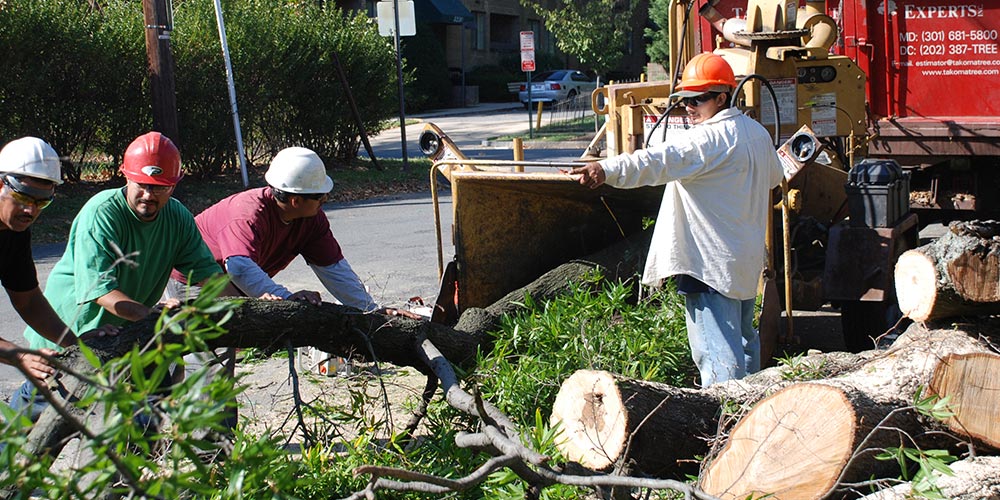
4 Alternatives to Tree Removal
October 16, 2023
Trees provide a variety of aesthetic, social, environmental, and economic benefits. Houses with trees sell faster and for more money. If you have a problematic tree, but you don’t want to remove it, there are plenty of other alternatives you can go with. These alternatives include:
Consult an arborist
If you already have a problem tree, a knowledgeable arborist can help remedy the problem without needing tree removal. The professional will analyze the tree’s condition and recommend the best course of action without removing the tree.
Even when tree removal is the best option, the arborist services provider will help you professionally remove the tree.
DIY tree removal can be hazardous, so the professional will come in handy.
In most cases, inexperienced pruning is the root cause of problems that will necessitate tree removal in the future. An arborist will help remove the tree with as minimal risk as possible. The professional will also help you know if your community requires tree work permits.
While you should hire an arborist, be aware that anyone with a pickup truck and a chainsaw can call themselves an arborist. For peace of mind, look for an arborist certified by the International Society of Arboriculture. This way, you can be sure that they will get the done properly and professionally.
Deal with tree roots.
One of the primary reasons homeowners remove trees is if they are growing near water pipes and the pipes are leaking.
You should note that pipe failure caused by problematic roots is less frequent than most people believe. Changes in the soil caused by compaction or freeze-thaw cycles cause cracks in pipes, most commonly near the joints.
Roots develop toward existing cracks where nutrients and moisture are abundant. They will only damage a water pipe if they have thoroughly invaded and filled the pipe’s interior.
Tree removal does not usually address the problem because the cracks persist, and the stump or leftover roots may expand.
Although pipe replacement is the most long-term remedy, homeowners frequently choose to manage the problem through maintenance. Chemical treatments applied regularly can help keep roots out of pipelines.
Consider using copper sulfate crystals instead of aquatic herbicides. If you have blocked sewers, mechanically remove them to prevent damage. You should perform this maintenance once a year.
Sometimes, you might find tree roots in a foundation fracture. This suggests that the tree caused the problem. However, roots are rarely the source of the crack or powerful enough to enlarge it.
Consider installing a root barrier at the foundation to avoid damage to your property.
Tree roots can interfere with neighboring pavement, producing fractures and lifting concrete to create problems when trees are planted too close to walkways or when soil is severely compacted.
Pruning can sometimes fix problems with roots. However, root pruning can harm tree health and risk undermining the tree.
In such a case, lifting or moving the pavement or creating root barriers is usually more effective.
Disarm the hazardous trees.
Falling branches and tumbling trees are most common during severe weather, such as high winds, snow, and ice storms, or when the ground is wet from heavy rain.
While certain tree species drop branches more easily than others, most trees can resist severe weather regularly.
When you hire an arborist, they can help determine whether trees are dangerous. To be dangerous, a tree must be both faulty and positioned in an area where it can become a target.
Trees with substantial root damage, such as from construction, are less sturdy and more likely to fall during winter or other extreme weather.
Other danger factors include dead branches, cavities, rot, poor branching structure (typically caused by improper trimming), and being swamped by vines.
You can avoid many hazards by trimming out the damaged branches or simply shifting the target so that the branches fall harmlessly.
Even trees in danger of falling can often be restored to health properly or secured with techniques such as cabling and bracing.
To have an easy time managing the risk, work with an experienced tree professional.
Open the blocked views.
One of the most prevalent reasons for removing a tree is that it obstructs a view. However, the view is dominated by trees.
Studies show that patients recovering from surgery who can see trees from their hospital beds recover faster, and extensive study demonstrates that exposure to trees increases human health and happiness.
To solve this issue, consider the trees as the vista’s frame. A row of topped trees is an unsightly frame, as are exposed rooftops and driveways caused by tree removal.
Instead of removing a tree, consider undertaking skilled pruning techniques such as windowing, interlimbing, or skirting up, which create views without damaging the trees.
These methods will enhance the intended view while hiding unsightly foreground elements and preserving the advantages of healthy trees.
And, if you must remove a tree, always plant a new one to absorb the CO2 that the old one used to absorb.
There you have it.
These are some of the things you can do instead of removing a tree. As mentioned, trees play a vital role in improving the environment, so you should conserve them as much as possible.
If you have to tree the tree due to old age or any other reason, ensure experienced tree removal companies Chevy Chase do the removal.
Some homeowners try to save money by removing themselves, but this isn’t wise. This is because there are plenty of things that can go wrong. For example, the tree can fall on your property.
You can also hurt yourself as you remove the tree.
Always let a professional help you out to ensure this doesn’t happen. Of course, you can remove the smaller trees, but let a professional handle the larger ones or those in risky areas.
